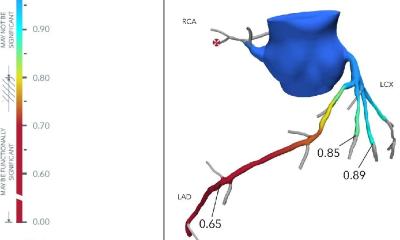Cardiovascular molecular imaging - is it ready for internal medicine diagnostics?
Imaging in Internal Medicine is among the main topics for 114th Congress of the German Society of Internal Medicine (March. Wiesbaden). Specialists in internal medicine, radiologists, and nuclear medicine have developed a programme that will not only provide an overview of the values of modern imaging procedures but also tackle controversial subjects.

Professor Wolfgang Bauer MD (Würzburg) specialist in molecular imaging and with special expertise in the cardiovascular field, writes: ‘The objective of molecular imaging is to capture physiological and pathophysiological processes on a molecular to cellular level, not only to gain new insights but also to be able to use appropriate therapy strategies at an early stage. Optical technologies, ultrasound, nuclear medical procedures and magnetic resonance imaging (MRI) are all suitable imaging procedures. The latter two procedures have particular potential for clinical use. Two topics are especially relevant for cardiovascular medicine: arteriosclerosis in the coronary vessels as the cause of heart attacks and healing of the heart after the occurrence of heart attacks.
The motivation for the first topic is that the cause of a heart attack is a tear in an unstable arteriosclerotic plaque. A thrombus then forms on this tear which, in turn, blocks the coronary vessel and therefore interrupts the blood supply to the heart muscle. The problem is the non-invasive identification of this unstable plaque as it normally doesn’t much restrict the coronary vessel, and therefore does not produce any symptoms. The plaque is also not characterised by an excessive calcification so that CT, for instance, is of no help here. However, molecular imaging should be able to capture and show the appropriate cell structures known to us from cellular and molecular biology. It is known, for instance, that active macrophages are located in the unstable plaque. These can be shown, for example, through unspecific absorption of ferrous nanoparticles (Jaffer, Libby et al. 2006), or through MR contrast media that specifically bind to surface markers of these cells (Amirbekian, Lipinski et al. 2007). It is also possible to identify early forms of arteriosclerosis. Here we make use of our knowledge that, even in the beginnings of arteriosclerosis, there are so-called adhesion molecules that line the inner walls of the vessels to which we can bind specific magneto-optical contrast media (Nahrendorf, Jaffer et al. 2006). These methods are invaluable for fundamental research. However, use on a patient will require more time because, aside from contrast media development, non-invasive imaging of coronary vessels also still requires significant improvements.
The particular relevance of myocardial healing for imaging results from the observation that, in many patients, the pumping capacity after major attacks declines continuously. Therefore it is important to promote myocardial healing in the best possible way straight after the occurrence of a heart attack. For regenerative therapies, hope rests on the administration of pre-stem cells. It is already possible to capture the cell distribution in a patient’s heart muscle using nuclear medical technologies (Hofmann, Wollert et al. 2005). But, we must emphasise that this is still an experimental procedure. In other areas there are approaches, for example to make scars as firm as possible through the modulation of wound healing factors, such as factor XIII. Verifying the efficiency via imaging is crucial and has already been achieved with nuclear medical procedures in animal experiments (Nahrendorf, Hu et al. 2006). The lack of spatial resolution was compensated by using fusion imaging via MRI (Sosnovik, Nahrendorf et al. 2007). Further strategies have tried to impact on programmed cell death (apoptosis) which is an important factor for the development of heart insufficiency after the occurrence of heart attacks. In animal experiments it has been possible to achieve apoptosis imaging with MRI (Hiller, Waller et al. 2006) and optical contrast media (Sosnovik, Schellenberger et al. 2005), which bind to surface molecules specifically present in apoptotic cells.
In conclusion, molecular imaging offers fascinating opportunities for fundamental, medical research to study processes in a largely non-invasive manner and to derive and verify the according therapy concepts. Molecular imaging is still in its beginnings with regards to direct use on patients. Ideally, we would be able to obtain optimum levels of information by combining highly sensitive, nuclear medical procedures and morphologically functional, high resolution MRI in the sense of fusion imaging.’
01.03.2008











